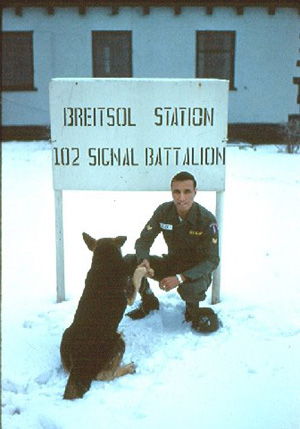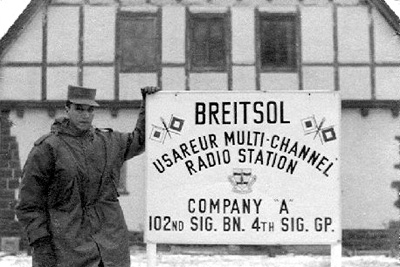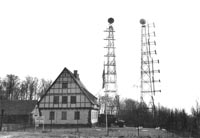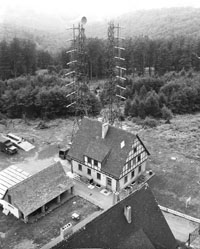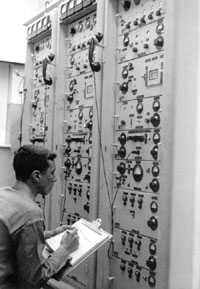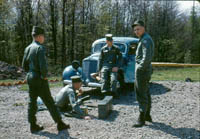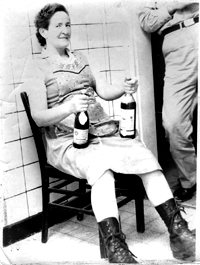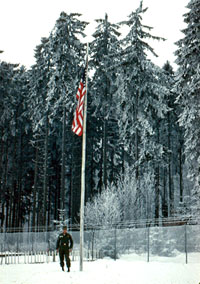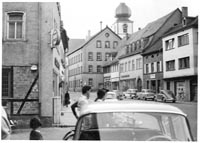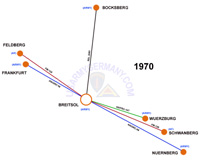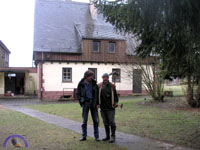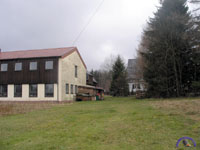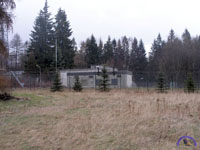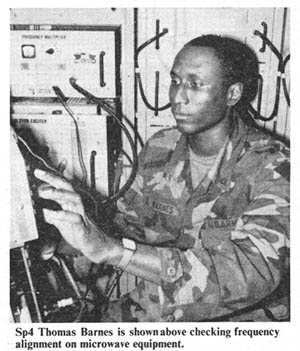| If you do
NOT see the Table of Contents frame to the left of this page, then
Click here to open 'USArmyGermany' frameset |
|||||||||
|
Breitsol Radio Station |
|||||||||
|
|
|||||||||
|
|||||||||
|
|
|||||||||
| Breitsol Radio Station | |||||||||
| 102nd Signal Battalion | |||||||||
| (Email from Miguel Felix, 102nd Sig Bn, 1959 to 1961) | |||||||||
|
|||||||||
|
|||||||||
| 68th Signal Battalion | |||||||||
| (Source: STARS & STRIPES, Nov 29, 1969) | |||||||||
| The Breitsol Communications Station is one of six radio relay sites operated by Company A in the Wiesbaden, Frankfurt, Darmstadt, and Nuernberg area. 10 members of Co A are stationed at the Breitsol site. The site serves as a relay site for both microwave and troposcatter communications and operates 24x7. |
|||||||||
| 261st Signal Co, 102nd Sig Bn | |||||||||
| (Source: Email from John D. Mercier, 261st Sig Co, 1978-80) | |||||||||
I was the station Chief at Breitsol ( On a business trip in May 2007 I visited the site. It is no longer in operation. The old barracks and Mess Hall buildings were sold to a German gentleman who uses it as a hunting lodge. He invited me in to look around and one of the technicians from the Bundespost site came over and we all talked about when the site was under US Army control. They both knew locals who had worked at the site such as Tilly, Marianne, and Potzel. Unfortunately I didn't have the time to look them up, but plan to on my next trip to Germany. ADDITIONAL INFORMATION |
|||||||||
|
|||||||||
There also was a Tactical Interface connection that was used during some exercises. The tactical unit would set up outside the Ops building and connect their circuits to our DCS system and we could connect them to any other fixed site in the command. The site consisted of the Operations Building and generator buildings shown in one of my pictures and two barracks buildings. All communications equipment was in the lower floor of the operations building. We had three 100KW generators which provided power in case of a commercial outage. The system would start and come on line automatically when commercial power went out. There was a water system which had a wellhead about 1500 meters down the side of the hill. Water was pumped up to a treatment facility in the basement of the new Barracks and Mess hall building. This supplied all drinking and cooking water for the site. There was a additional old well system on the site proper but it was Non Potable. This water was used for fire points heating and irrigation. The barracks consisted of the older building in the picture (Built in the 30s )and the newer building built sometime in the mid 70's. We had around 20 to 25 personal assigned with about 15 living on site. We had two German cooks Tillly and Marianne, , two Local Technicians Potzel and Rudy and a generator tech Wolfgang who also did all the gardening (the troops loved him). We were very involved with local harpings in Markhidenfeld and had many local national friends. The site was part of the Aschaffenburg military community (18 miles away) and received support from them. The Mess hall was a Non-appropriated mess with those living on site buying the food thru the class 1 facility in Aschaffenburg. We had a SPC 5 mess sergeant who did all the paper work but only cooked if both local cooks were out (thank God that didn't happen very often). >>From 1967 to 1970 I was at Lohnsfeld and Kaiserslautern M/W sites. Lohnsfeld was about 4 miles from Sembach AB and the HF receiver facility for Pirmasens. I had the M/W portion. We had Siemens PPM-24 Radio's which were then replaced by a temporary AN/GRS-66 van mounted system while they installed the Motorola MR-300 system. The rest of the site consisted of HF Radio Receiver Systems. Kaiserslautern DCS was a terminal site. It was located on the hill behind Panzer Karserne, and provided Communications for the Kaiserslautern Military Community (which was Army controlled at that time), We had a single space diversity M/W shot to Donnersberg using Siemens PPM-24 (Pulse Position Modulation) system which was replaced with Motorola MR-300 radios and MX-106 Multiplex during my time there. |
|||||||||
|
|||||||||
| (Source: The Aschaffenburg Forum, April 10, 1985) | |||||||||
| Breitsol beams signals to community By Ted Ramsaur Dozens of remote radio sites all over Europe ensure that a phone call gets from Bremerhaven to Vicenza and that a community receives its AFN television signal. One such site is Breitsol. Breitsol is a 24-hour-a-day, seven-day-a-week operation owned by 5th Signal Command's 261st Signal Company. Part of Aschaffenburg Military Community (MILCOM), the site is a mini-community made up of a dining facility, single soldiers quarters, recreation room with weight equipment and a tiny PX. |
|||||||||
|
|||||||||
| The soldiers who keep the airways humming need to have food and SEC Larry Robinson, dining facility manager, makes sure that shift workers and others can cat at odd hours of the day or night. "We're more like a snack bar than a dining facility," says Robinson. "Kind of like mama takin' care of 'em." "We're like a family" is the often-heard description of life at Breitsol. The family living aspect and take-care-of-yourself attitude is seen in other ways. Dewitt says soldiers help cover each other's jobs to allow them to enroll in and attend college classes. The grounds are immaculately groomed, with garden and flower pots laid out waiting to be planted. Dewitt's wife, Roswitha, gives aerobics classes three times a week for the wives and female soldiers. Getting involved with the German community is the norm for Breitsol, where most learn to speak some German. At one time, says Dewitt, they had their own soccer team that played local teams all over the area. Now they have individual members on a German track team, Hallen-Handball team and soccer team, he adds. "When Marktheidenfeld has their fest we have a table up front next to the band," says Dewitt. He also says that site members are continually invited to local events. Breitsol is called a "remote site," but the "family" there has proven themselves anything but remote. |
|||||||||
|
|
|||||||||

